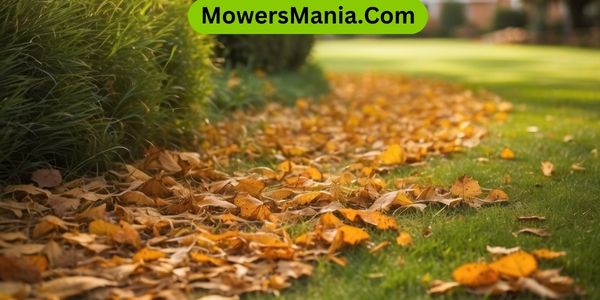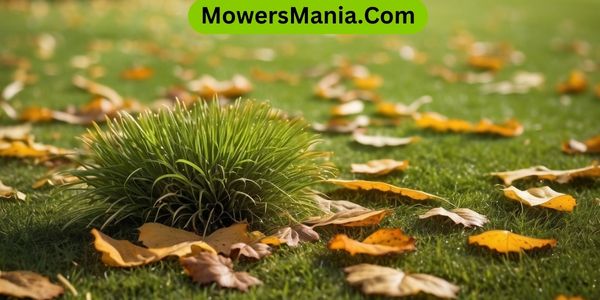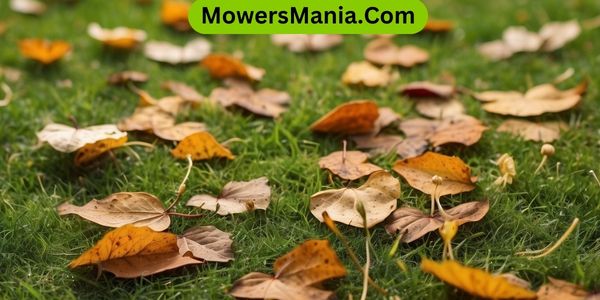Are you struggling to keep your lawn healthy this fall? Don’t worry, we’ve got you covered. In this article, we’ll help you identify and treat common lawn diseases that can wreak havoc on your yard.
From spotting early symptoms to effective treatment methods, we’ll provide you with expert tips and preventive measures to ensure your lawn stays disease-free.

Say goodbye to brown spots and hello to a vibrant and thriving lawn this season.
Understanding Lawn Diseases in Fall
In fall, you need to understand the common lawn diseases that can affect your yard. As the weather changes and temperatures begin to cool, certain diseases become more prevalent. It’s important to be aware of these diseases and take proactive measures to prevent or treat them.
One common lawn disease that occurs in the fall is brown patch. This disease is caused by a fungus and appears as circular patches of brown, dead grass.
Another common disease is dollar spot, which is characterized by small, silver-dollar-sized patches of dead grass.
Leaf spot is another disease to watch out for in the fall. It causes small, dark spots on the leaves, eventually leading to the death of the grass blades.
Lastly, snow mold is a disease that can occur in the winter, but its symptoms start appearing in the fall. It appears as circular patches of pink or grayish mold on the grass.
Understanding these common diseases and their symptoms will help you take appropriate action to protect your lawn and keep it healthy throughout the fall season.
Identifying Common Lawn Diseases
To identify common lawn diseases in fall, you should familiarize yourself with their distinct symptoms. By recognizing these symptoms early on, you can take the necessary steps to treat and prevent further damage to your lawn.
Here are three key symptoms to look out for:
- Patchy or discolored grass: If you notice patches of grass that are significantly different in color or have a wilted appearance, it could be a sign of a lawn disease. Brown patches may indicate a fungal infection, while yellow patches may suggest a nutrient deficiency or root damage.
- Presence of mold or fungus: Keep an eye out for the presence of mold or fungus on your lawn. These can appear as powdery substances, slimy patches, or even mushrooms. Fungal infections can spread quickly and cause extensive damage to your grass if not addressed promptly.
- Thin or dying grass blades: Take a close look at the blades of your grass. If you notice thinning or dying grass blades, it could be a sign of a disease. Some diseases can cause the grass blades to become discolored or develop lesions, which can ultimately lead to their death.
Early Symptoms and Signs to Look Out For
Keep a vigilant eye on your lawn for early symptoms and signs of common lawn diseases in fall. Detecting these issues early on can prevent them from spreading and causing further damage to your lawn.
Here are some common lawn diseases to watch out for and their accompanying symptoms:
| Disease | Symptoms |
|---|---|
| Brown Patch | Circular patches of brown, dead grass with a dark brown border. Affected grass may feel slimy and have a rotten smell. |
| Dollar Spot | Small, silver dollar-sized brown spots on the grass blades. These spots may merge together, forming larger irregular patches. |
| Powdery Mildew | White or gray powdery substance on the grass blades. The affected grass may appear stunted and have a distorted growth pattern. |
Effective Treatment Methods for Lawn Diseases

Once you have identified common lawn diseases in fall, it’s important to implement effective treatment methods to restore the health of your lawn. Here are three effective treatment methods to consider:
Preventive Measures to Keep Your Lawn Disease-Free
Continue maintaining a disease-free lawn by implementing preventive measures. By following these simple steps, you can keep your lawn healthy and free from diseases.
First, make sure to mow your lawn at the proper height. Cutting the grass too short can weaken it and make it more susceptible to diseases.
Additionally, it’s important to water your lawn correctly. Water deeply and infrequently to encourage deep root growth and avoid shallow roots, which can lead to disease.
Furthermore, avoid overwatering, as this can create a damp environment that promotes the growth of fungi and other pathogens.
Regularly inspect your lawn for signs of disease, such as discoloration, spots, or patches. If you notice any issues, take immediate action to prevent the disease from spreading.
Finally, practice proper lawn care maintenance, such as removing debris and thatch, and aerating your lawn to improve air circulation and drainage.
Expert Tips for Maintaining a Healthy Lawn in Fall

To maintain a healthy lawn in fall, there are a few expert tips you should follow.
Fertilizer for Fall
Apply the recommended amount of fertilizer to your lawn in the fall to ensure a healthy and vibrant yard. Fall is a crucial time to fertilize your lawn because it helps to strengthen the grass roots, promotes growth, and prepares it for the winter months.
Here are three expert tips for maintaining a healthy lawn in the fall:
Preventing Weed Growth
To prevent weed growth in your lawn during the fall season, follow these expert tips.
- First, make sure to mow your lawn regularly, keeping the grass at a height of about 2-3 inches. This will help shade the soil and prevent weed seeds from germinating.
- Second, water your lawn deeply but infrequently, allowing the soil to dry out between watering sessions. This will discourage weed growth while promoting the healthy growth of your grass.
- Third, aerate your lawn to improve soil drainage and reduce compaction, creating an environment that is less favorable for weeds.
- Lastly, consider using a pre-emergent herbicide to prevent weed seeds from germinating. Be sure to follow the instructions carefully for best results.
| Expert Tips for Preventing Weed Growth |
|---|
| 1. Mow your lawn regularly |
| 2. Water deeply but infrequently |
| 3. Aerate your lawn |
| 4. Use pre-emergent herbicides |
| 5. Follow instructions carefully |
Proper Watering Techniques
Maintain a healthy lawn in the fall by following these expert tips for proper watering techniques.
To ensure that your lawn receives the right amount of water, consider the following:
- Water deeply: Instead of frequent shallow watering, give your lawn a deep soak. This encourages the roots to grow deeper, making them more resilient to drought.
- Water in the morning: Watering your lawn in the early morning allows the grass to dry off before nightfall. This helps prevent the growth of fungal diseases, as moisture on the grass blades for extended periods can create a favorable environment for diseases to thrive.
- Use a rain gauge: Invest in a rain gauge to measure the amount of rainfall your lawn receives. This way, you can supplement with additional watering if needed and avoid overwatering.
Frequently Asked Questions [FAQs]
Can Lawn Diseases in Fall Affect Other Plants in My Garden?
Yes, lawn diseases in fall can affect other plants in your garden. It’s important to identify and treat these diseases promptly to prevent them from spreading and damaging the rest of your plants.
Are There Any Natural Remedies to Treat Lawn Diseases in Fall?
There are natural remedies to treat lawn diseases in fall. You can try using organic fungicides, improving soil drainage, and practicing good lawn maintenance. These methods can help prevent and treat common lawn diseases.
How Often Should I Water My Lawn During Fall to Prevent Diseases?
You should water your lawn during fall regularly to prevent diseases. Make sure to water deeply but infrequently, about once or twice a week, to encourage deep root growth and avoid creating a damp environment that promotes diseases.
Can Lawn Diseases in Fall Be Spread Through Mowing and Trimming?
Yes, lawn diseases in fall can spread through mowing and trimming. When you mow or trim infected grass, the pathogens can be dispersed, potentially infecting other areas of your lawn.
Are There Specific Lawn Care Practices I Should Avoid During Fall to Prevent Diseases?
During fall, there are certain lawn care practices you should avoid to prevent diseases. These include overwatering, mowing too short, and leaving debris on the lawn. Proper maintenance and regular inspections can help keep your lawn healthy.
Conclusion
In conclusion, by understanding and identifying common lawn diseases, homeowners can effectively treat and prevent them in the fall season.
By being attentive to early symptoms and signs, and implementing the appropriate treatment methods, your lawn can remain disease-free.
Additionally, following expert tips for maintaining a healthy lawn in the fall will contribute to its overall health and vitality.
With proper care and attention, you can enjoy a beautiful and disease-free lawn all year round.



